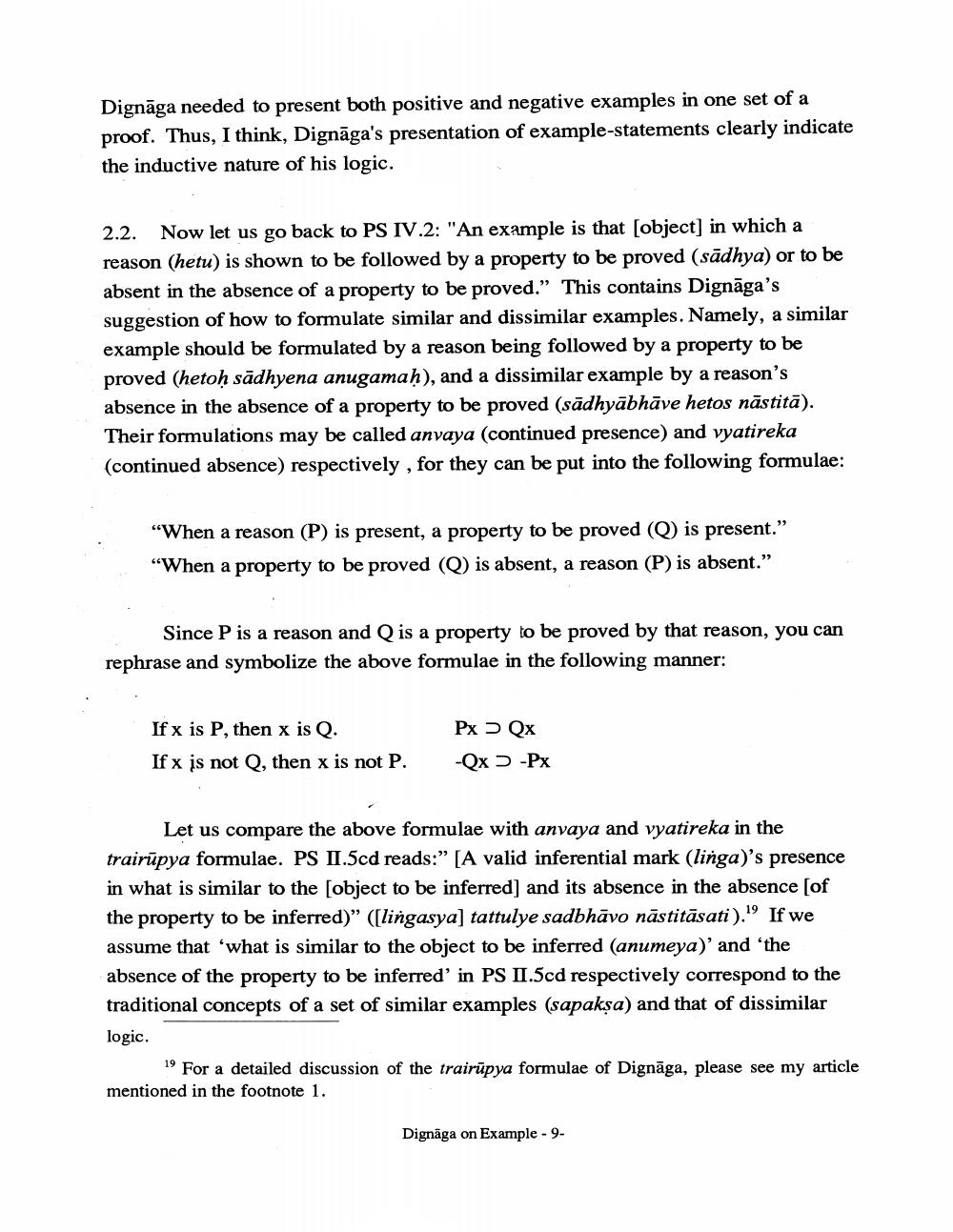Book Title: Role Of Drstanta Indignagas Logic Author(s): Shoryu Katsura Publisher: Shoryu Katsura View full book textPage 9
________________ Dignāga needed to present both positive and negative examples in one set of a proof. Thus, I think, Dignāga's presentation of example-statements clearly indicate the inductive nature of his logic. 2.2. Now let us go back to PS IV.2: "An example is that [object) in which a reason (hetu) is shown to be followed by a property to be proved (sādhya) or to be absent in the absence of a property to be proved.” This contains Dignāga's suggestion of how to formulate similar and dissimilar examples. Namely, a similar example should be formulated by a reason being followed by a property to be proved (hetoḥ sādhyena anugamaḥ), and a dissimilar example by a reason's absence in the absence of a property to be proved (sādhyābhāve hetos nāstitā). Their formulations may be called anvaya (continued presence) and vyatireka (continued absence) respectively, for they can be put into the following formulae: “When a reason (P) is present, a property to be proved (Q) is present.” “When a property to be proved (Q) is absent, a reason (P) is absent." Since P is a reason and Q is a property to be proved by that reason, you can rephrase and symbolize the above formulae in the following manner: If x is P, then x is Q. If x is not Q, then x is not P. Px > Qx Qx > -Px Let us compare the above formulae with anvaya and vyatireka in the trairūpya formulae. PS II.5cd reads:" [A valid inferential mark (linga)'s presence in what is similar to the [object to be inferred) and its absence in the absence [of the property to be inferred)” ([lingasya] tattulye sadbhāvo nāstitāsati)." If we assume that 'what is similar to the object to be inferred (anumeya)' and 'the absence of the property to be inferred' in PS II.5cd respectively correspond to the traditional concepts of a set of similar examples (sapakşa) and that of dissimilar logic. 19 For a detailed discussion of the trairūpya formulae of Dignāga, please see my article mentioned in the footnote 1. Dignāga on Example - 9Page Navigation
1 ... 7 8 9 10 11 12 13 14 15 16 17 18 19 20 21 22 23 24
